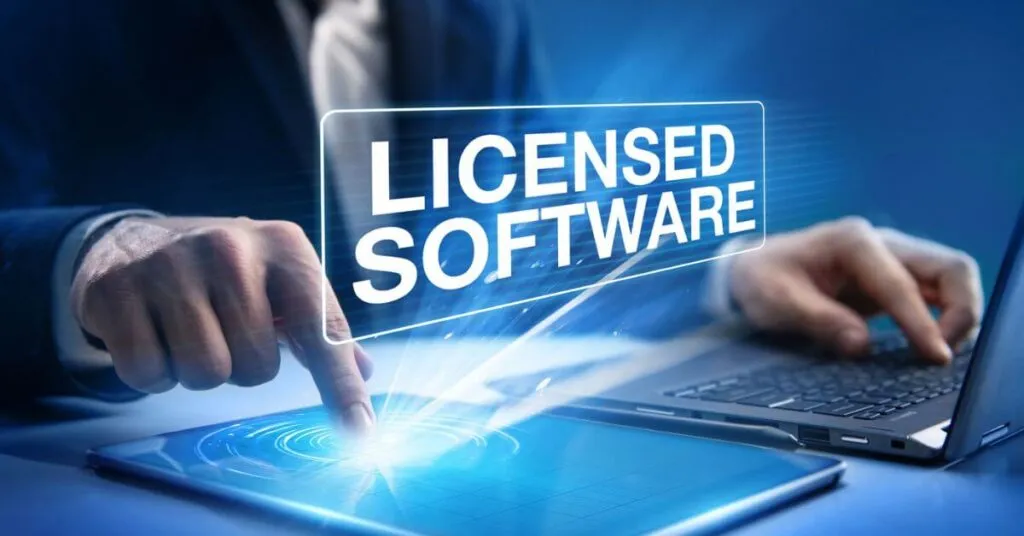A Small Business Guide To Managing Software Licenses And Updates Effectively – Business software is the backbone of operations for most small businesses. From accounting tools to customer relationship management systems, software applications streamline processes and drive productivity.
However, managing software licenses and updates can be a complex task, impacting not only operational efficiency but also the company’s overall financial health.
This article delves into the crucial role of effective software management strategies, offering insights into the best practices and discussing the benefits they provide to small businesses.
Understanding Software License Management (SLM)
Software licenses vary from proprietary to open-source and subscription-based models. Each type has distinct terms and conditions affecting usage rights, limitations, and update privileges.
With several aspects to look into, software license management (SLM) becomes a necessary business task. It encompasses monitoring, controlling, and optimizing software license acquisition, deployment, and usage within an organization’s ecosystem.
How To Effectively Manage Software Licenses And Updates

In terms of procedures, SLM involves maintaining a comprehensive inventory of licenses, tracking their usage, ensuring compliance with licensing agreements, and strategically managing updates and renewals. In doing so, small businesses can optimize their investments while minimizing risks associated with non-compliance, overspending, or security vulnerabilities.
Below, you’ll find the best practices for effective software licensing governance:
- Seek IT Managed Support Services
Integrating IT managed support into their SLM strategy can be a game-changer for businesses. This proactive approach enhances operational efficiency and mitigates the damaging costs of non-compliance or outdated software. Professionals can help optimize license usage, streamline update processes, and swiftly address licensing-related issues.
- Allocate A Budget for Your Software Needs
Dedicating a specific budget for software licensing and updates is essential for financial planning. This allows businesses to anticipate and allocate funds for license renewals, upgrades, or new software acquisitions. A well-defined budgeting strategy ensures the organization remains prepared for software-related expenses without compromising other operational needs.
- Use An Automated Tracking System
Utilizing dedicated software or platforms designed for license management helps businesses keep a record of all licenses owned, their expiration dates, and the number of installations allowed. This centralized approach empowers organizations to optimize their software assets, preventing overspending on unnecessary licenses while ensuring adherence to licensing agreements.
- Implement A Structured Schedule For Updates And Patch Management
Regular software updates and patches are critical for security enhancements, bug fixes, and improved functionalities. Automated systems can be leveraged to deploy these updates systematically, reducing the burden on IT teams and minimizing disruptions to daily operations. Prioritizing critical updates, particularly those addressing security vulnerabilities, ensures a proactive defense against potential cyber threats, safeguarding sensitive data and systems.
- Centralize Software Deployment
Centralizing software deployment simplifies the update process and enhances control. Utilizing a centralized management system enables businesses to simultaneously deploy updates across multiple devices, ensuring uniformity and security compliance.
- Utilize Cloud-Based Solutions
Exploring cloud-based software solutions can simplify license management and updates, particularly for businesses with remote or distributed teams. These often offer scalable licensing models and automated update mechanisms, easing the burden of manual management and ensuring uniformity across diverse work environments.
- Periodically Review Your Business Needs And Adapt
Regularly reassessing software needs and usage patterns is crucial for optimizing resources. Businesses should continuously evaluate whether the current software aligns with evolving business objectives. This periodic review allows organizations to adapt and optimize software usage, ensuring that investments align with operational requirements.
- Perform Regular Audits And Compliance Checks
Conducting periodic checks helps identify discrepancies, such as unused licenses or unauthorized software installations. This enables swift rectification of issues before they escalate. Documentation of audit results is crucial for maintaining an accurate inventory of software assets and licenses.
- Train And Update Your Staff
Empowering employees with knowledge about software licensing policies and the significance of updates is key to fostering a culture of compliance. Training programs and awareness campaigns educate staff about license usage guidelines and the importance of adhering to updated schedules. It can help significantly reduce the risk of accidental license violations.
Effective management of software licenses and updates is a multifaceted endeavor crucial for the operational success and security of businesses. The comprehensive approach above not only ensures compliance and optimizes resource utilization but also positions businesses to adapt swiftly to technological advancements and changing market demands.
Conclusion
A robust SLM and regular updates aren’t just about staying current; they’re about minimizing risks, optimizing costs, enhancing security, and ensuring operational efficiency. At its core, SLM is a proactive approach that aligns businesses with technological advancement, as well as safeguards their operations and assets.
By implementing proactive strategies, leveraging technology, and integrating IT managed support, businesses can maintain regulatory compliance while maximizing the value of their software investments.


